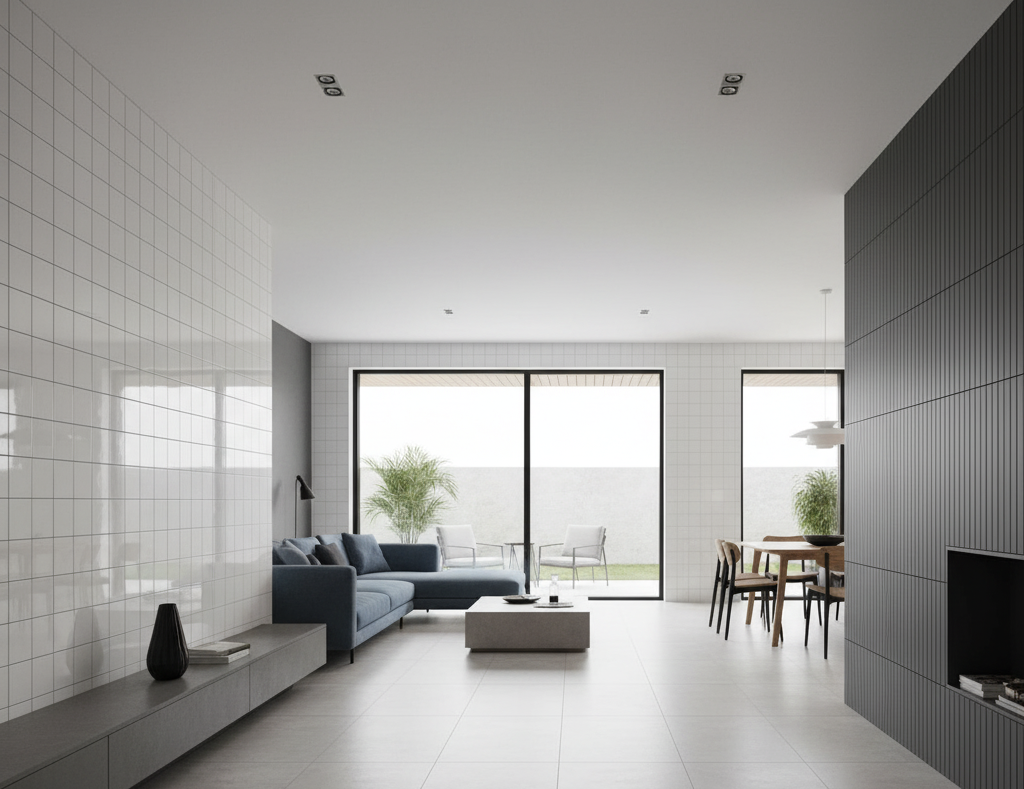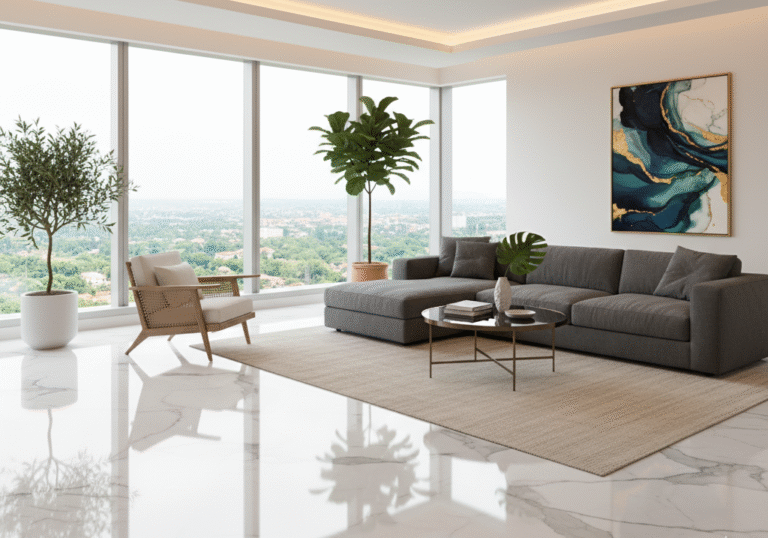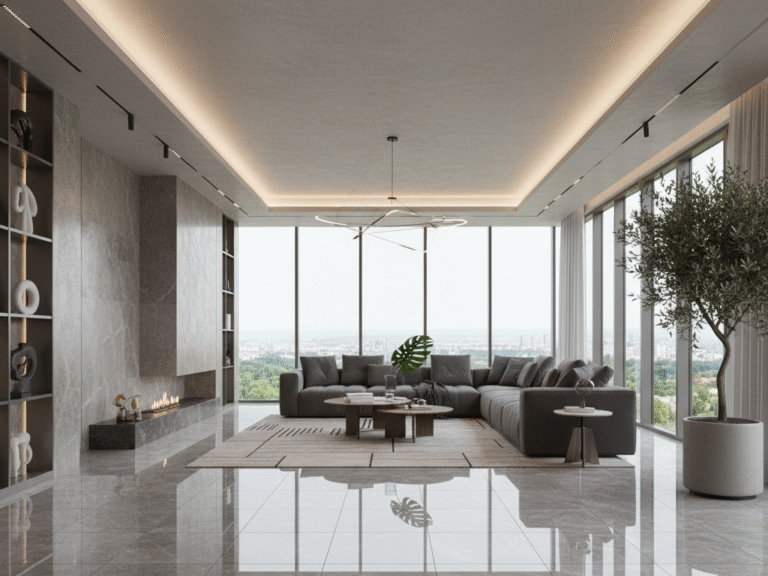Ceramic floor and wall tiles are produced from a blend of clay, minerals, and water. This mixture is molded into the desired shape and size, then fired in a kiln at very high temperatures to give the tiles hardness and durability.
The main ingredient is clay, a natural and abundant material. Other minerals such as feldspar, kaolin, quartz, and talc are often added to improve the strength, durability, and color of the tiles.
After firing, most ceramic tiles are finished with a glaze—a glass-like coating that makes the surface resistant to water, stains, and scratches. Glazes may be clear or colored and are available in finishes like glossy, matte, or textured.
In short, ceramic tiles are made by mixing natural materials, shaping them into tiles, firing them in a kiln, and then finishing with a glaze for protection and decoration.
Why Ceramic Tiles Are Popular
Ceramic tiles are widely used for both floors and walls because they are:
- Durable – long-lasting and resistant to wear.
- Versatile – suitable for many design styles and applications.
- Attractive – available in countless colors, textures, and patterns.
How Ceramic Tiles Are Manufactured
The manufacturing process has several steps:
- Preparing raw materials – Clay and minerals are carefully measured and blended.
- Shaping the tiles – Methods such as pressing, extrusion, or casting are used.
- Drying – Excess moisture is removed before firing.
- Firing in a kiln – High heat strengthens the tiles and defines their final properties.
- Glazing (optional) – A protective, decorative coating is applied, then fired again at a lower temperature.
Tiles can also be decorated using screen printing, hand-painting, or digital printing for unique designs.
Eco-Friendly Choice
Ceramic tiles are sustainable since they are made from natural materials, last a long time, and can be recycled or reused. They are also easy to maintain—just regular cleaning and occasional sealing if needed.
Types of Ceramic Tiles
- Glazed Tiles – Coated with liquid glass fused during firing. Water- and stain-resistant, ideal for indoor use.
- Unglazed Tiles – Natural, rustic look. More porous and need sealing. Good for outdoor and high-traffic spaces.
- Porcelain Tiles – A finer clay mix, fired at higher temperatures. Dense, durable, and suitable indoors and outdoors. Can mimic stone or wood.
- Terracotta Tiles – Made from natural clay with a warm, earthy look. Common in Mediterranean designs, but require sealing.
Design Options
Ceramic tiles come in many shapes and sizes—square, rectangular, hexagonal, or even octagonal. They can be arranged in patterns like straight, diagonal, herringbone, or basketweave for added style.
Final Word
Ceramic tiles combine natural materials, strength, and beauty. Available in glazed, unglazed, porcelain, and terracotta varieties, they provide endless design possibilities. Their durability and timeless appeal make them one of the most popular choices for both flooring and wall coverings worldwide.




